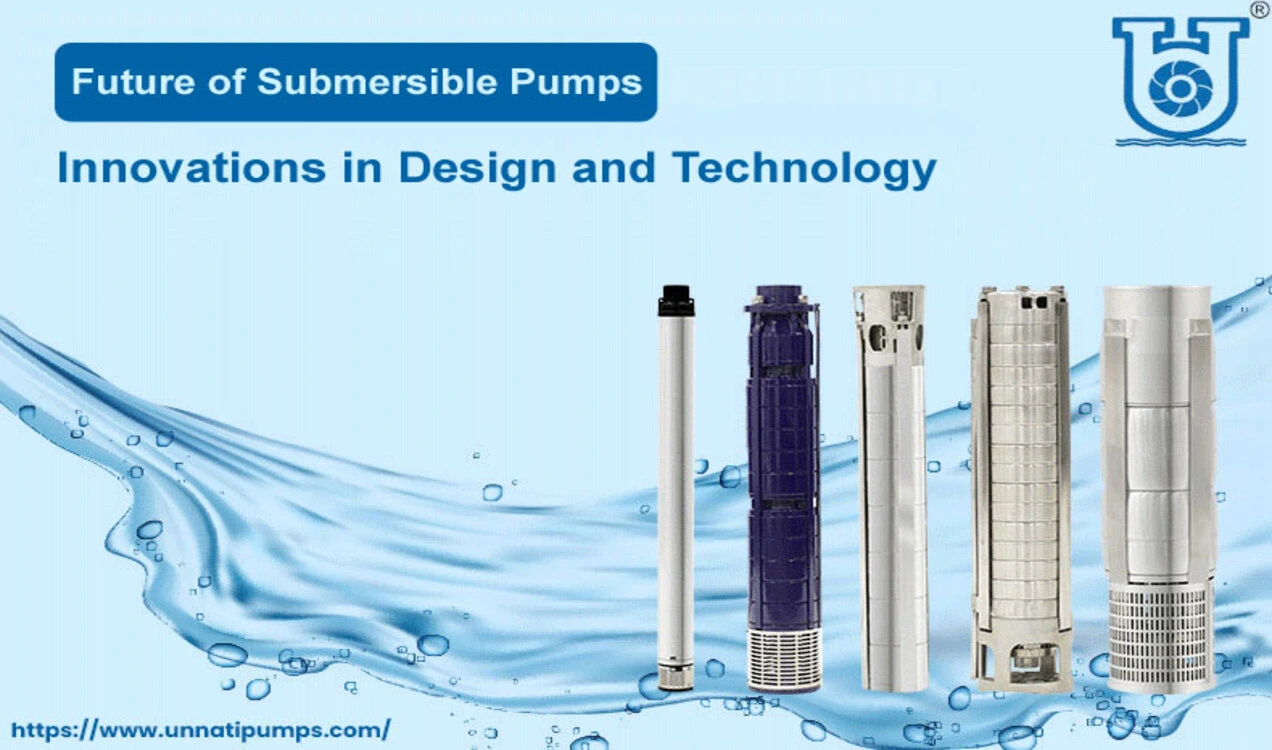In many various areas, including waste management, construction, and agriculture, submersible pumps serve an essential role. They are utilized for duties that include pumping sewage, emptying mines, and removing water from flooded locations. This blog seeks to offer an overview of submersible pumps, analyze their uses across numerous sectors, and assess the present state and possible advances in the area. The purpose is to enlighten readers about the most current technology and design breakthroughs and how they may affect submersible pumps in the future.
The Current State of Submersible Pumps:
The motor and impeller of typical submersible pumps are contained in a waterproof casing. They operate by translating the motor’s rotational energy into kinetic energy in the fluid being pumped. These pumps have been in operation for a long time and have proved their durability and efficiency. But their effectiveness and adaptability are constrained.
Traditional submersible pumps have a number of shortcomings, including excessive energy consumption, poor durability in severe conditions, and a narrow range of uses. They may also be difficult to install and enormous or monstrous. As a result of these constraints, new and improved submersible pump designs with increased performance, efficiency, and flexibility have been developed.
Submersible pump technology is currently progressing owing to the use of improved materials, energy-efficient motors, and sophisticated control systems. Some pumps today employ smart sensors to monitor and optimize performance, while others feature modular designs that are easy to maintain and replace. There are also new submersible pumps on the market that are more flexible, lighter, and portable. These advancements are meant to boost the efficacy, reliability, and performance of submersible pumps.
Emerging Trends in Submersible Pump Technology:
Advancements in materials and manufacturing processes have led to the creation of submersible pumps that are stronger, lighter, and more corrosion-resistant. The introduction of high-strength materials such as stainless steel, titanium, and composites have boosted the durability and lifetime of submersible pumps. Improved manufacturing processes, like precision machining and 3D printing, have also enabled the production of increasingly complex and sophisticated pump designs. These innovations have increased the overall performance and dependability of submersible pumps.
The rising usage of smart technologies and digitalization has changed the submersible pump sector. Pumps connected with sensors, IoT connections, and modern control systems can now gather and analyze data, allowing for real-time monitoring and adjustment of performance. Digitalization has also made it feasible to remotely operate and monitor pumps, decreasing the need for on-site visits and physical intervention. This has enhanced the efficiency and dependability of submersible pumps and has opened up new opportunities for their usage in a range of sectors.
Submersible pumps have been created that utilize less energy and produce less waste as a consequence of the focus on energy efficiency and sustainability. Order to optimize performance and waste less energy, this demands the adoption of energy-efficient motors, better design, and smarter control systems. The utilization of renewable energy sources, including solar power, to run submersible pumps in far-off locales is another developing trend. Lowering the environmental effect of submersible pumps and making them more sustainable for future generations are the aims of these endeavors toward energy efficiency and sustainability.
Innovations in Submersible Pump Design:
The submersible pump business has seen a revolution as a result of the lightweight and compact designs, which have increased their use and accessibility. These pumps are perfect for usage in confined places and inaccessible distant sites. They are a popular option for a range of sectors because of their lightweight and compact form, which makes handling and installation simple.
Innovative impeller designs have considerably boosted the performance of submersible pumps. These designs optimize flow and optimum efficiency, resulting in greater pump performance. The new impeller designs also enable the handling of a larger range of fluids and enhance the lifespan of the pump. These innovations in impeller design have greatly increased the effectiveness of submersible pumps in several domains.
The development of customized pumps for specialist tasks has substantially enhanced the efficacy of submersible pumps. These pumps are intended to satisfy the special needs of diverse sectors, such as dewatering, sewage, and wastewater treatment. By having pumps developed especially for various places, the pumps are able to perform more efficiently and effectively, resulting in superior results for the end user. These specialty pumps are a testament to the continual developments in the submersible pump market.
Impact of Innovations on the Future of Submersible Pumps:
Submersible pump design and technical improvements are having a huge influence on the future of these pumps. The most contemporary designs and technologies are boosting the efficiency and reliability of submersible pumps, cutting their cost of ownership, strengthening their safety, and minimizing their environmental effect. Submersible pumps have a bright future, with continual advances in design and technology predicted to boost their performance and effect across numerous industries.
Conclusion:
In conclusion, the future of submersible pumps is bright and laden with countless advances in design and technology. The improvements in materials and manufacturing, the expanding use of smart technologies, and the focus on energy efficiency and sustainability are all affecting the future of submersible pumps in a beneficial way. It is vital to be informed and up-to-date on the newest developments in submersible pump technology to fully comprehend the benefits they provide.
You can also read: A Look at the Top Submersible Motor Trends


